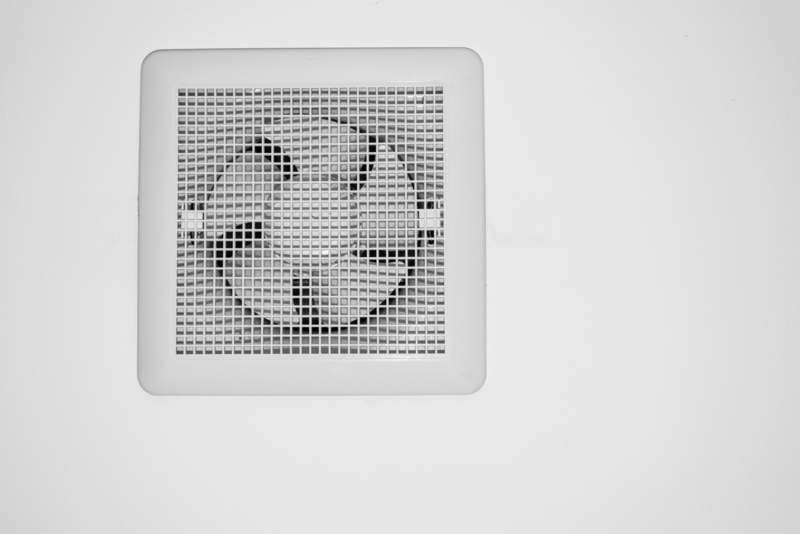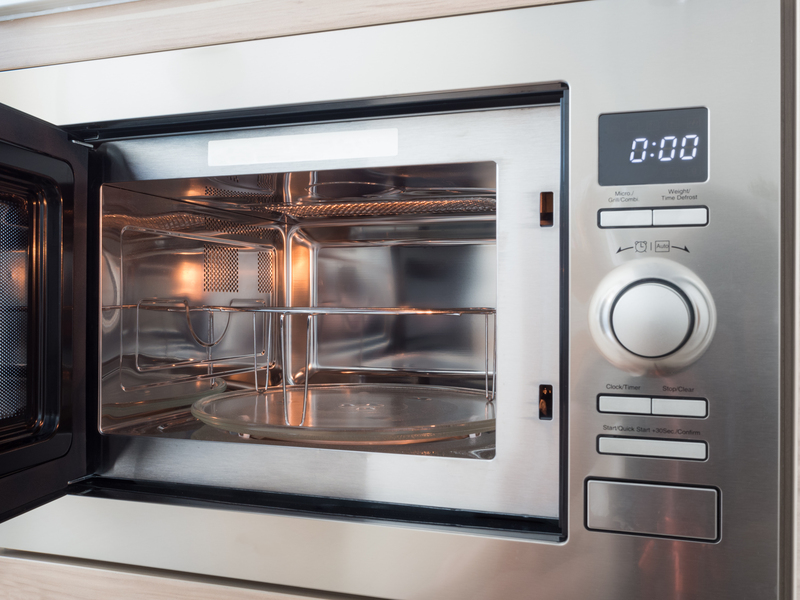Enhancing Indoor Environments: The Role of Air Quality
Posted on 17/06/2025
Enhancing Indoor Environments: The Role of Air Quality
Air quality plays a pivotal role in creating healthy and comfortable indoor environments. As people spend a significant portion of their lives indoors, the importance of indoor air quality (IAQ) has become increasingly evident. Poor air quality can cause a range of health issues, reduce productivity, and negatively influence overall well-being. This comprehensive article delves into the role of air quality in enhancing indoor environments, examines common pollutants, discusses their impacts, and offers effective strategies for improving IAQ at home, workplaces, and public settings.
Understanding Indoor Air Quality
Indoor air quality refers to the condition of the air inside buildings, especially in relation to the health and comfort of occupants. Unlike outdoor air, which is subject to natural dispersion, indoor environments can trap pollutants, exacerbating exposure. Enhancing indoor air environments requires careful management of sources, ventilation, and purification methods.
Key Metrics for Measuring IAQ
- Particulate Matter (PM2.5 & PM10): Small particles suspended in the air, which can penetrate the respiratory system.
- Volatile Organic Compounds (VOCs): Chemicals emitted by household products and furnishings.
- Carbon Dioxide (CO2): Elevated levels can indicate poor ventilation and impact cognitive function.
- Humidity: Excess moisture can foster mold growth, while very dry air irritates respiratory passages.
- Carbon Monoxide (CO): A colorless, odorless, and potentially lethal gas produced by incomplete combustion.

Sources of Indoor Air Pollution
Understanding the origins of indoor air pollution is essential for managing air quality enhancements. Common sources include:
- Household Cleaners and Chemicals: Many contain volatile organic compounds (VOCs) that are released during use and storage.
- Cigarette Smoke: Both direct and secondhand smoke introduce harmful substances into the air.
- Building Materials: Products like paints, adhesives, and pressed wood release formaldehyde and other pollutants.
- Combustion Appliances: Stoves, fireplaces, and heaters can emit carbon monoxide and particles.
- Poorly Maintained HVAC Systems: These may harbor dust, mold, or bacteria, distributing them throughout indoor spaces.
- Outdoor Pollutants: Pollen, outdoor fumes, and dust can infiltrate through windows and doors.
- Biological Sources: Dust mites, mold, and pets contribute allergens and organic particles.
Emerging Concerns in Modern Indoor Environments
As buildings become increasingly energy-efficient, natural ventilation is often reduced, potentially allowing indoor air contaminants to accumulate. Office equipment, electronics, and synthetic materials now contribute to indoor air pollution, making enhancing indoor environments even more crucial in contemporary living and working spaces.
The Impact of Indoor Air Quality on Health and Well-being
Enhancing indoor air quality goes far beyond comfort - it is fundamental for health. The World Health Organization (WHO) links poor IAQ to severe health effects, which range from mild irritations to life-threatening diseases. Improving air quality indoors not only safeguards physical well-being but also supports mental health and cognitive function.
Short-Term Health Effects
- Eye, nose, and throat irritation
- Headaches, dizziness, and fatigue
- Exacerbation of allergies and asthma symptoms
Long-Term Health Risks
- Respiratory diseases such as asthma, bronchitis, and COPD
- Increased risk of cardiovascular diseases
- Developmental issues in children
- Increased risk of cancer due to prolonged exposure to certain toxins
Mental alertness is also impacted by poor indoor air quality. Studies have shown a strong association between elevated CO2 or VOC levels and declines in cognitive performance, particularly in tasks requiring complex decision-making.
Key Strategies for Improving Indoor Air Quality
Enhancing air quality in indoor environments requires a multi-pronged approach, integrating source control, ventilation, humidity management, and the use of advanced cleaning technologies.
1. Source Control
- Choose low-VOC products: Opt for paints, cleaners, and furnishings certified as low in emissions.
- Eliminate tobacco smoke: Institute a strict no-smoking policy indoors.
- Maintain combustion devices: Regularly inspect and tune stoves, heaters, and fireplaces.
- Prompt maintenance: Fix leaks and moisture issues quickly to prevent mold growth.
2. Adequate Ventilation
- Open windows and doors: Allow for cross-ventilation, especially during activities like cooking or cleaning.
- Mechanical Ventilation: Install systems such as exhaust fans in kitchens and bathrooms to expel humidity and pollutants.
- Whole-house ventilation: Consider Energy Recovery Ventilators (ERVs) or Heat Recovery Ventilators (HRVs) for continuous fresh air in energy-efficient homes.
3. Humidity Control
- Use of dehumidifiers: Especially in basements or high-humidity environments.
- Humidifiers in dry climates: Maintain indoor humidity between 30-50% to minimize respiratory irritation and inhibit mold.
- Monitor humidity levels: Invest in a hygrometer for accurate measurement.
4. Air Cleaning Technologies
- HEPA Filters: High-efficiency particulate air filters capture particles as small as 0.3 microns with remarkable effectiveness.
- Activated Carbon Filters: Particularly effective against gases, odors, and some VOCs.
- UV-C Purifiers: Use ultraviolet light to deactivate bacteria, viruses, and fungi.
- Electrostatic Precipitators: Use electric charges to attract particles to metal plates.
- Regularly replace filters: Ensure all purification devices function at their best.
5. Maintenance and Cleaning
- Vent cleaning: Keep HVAC ducts and exhaust fans free of dust and debris.
- Regular vacuuming: Use vacuums with HEPA filters for carpets, rugs, and upholstered furniture.
- Address mold promptly: Clean visible mold using appropriate cleaners and methods.
- Encourage shoe-free environments: Shoes bring in dirt, pollen, and pollutants from outdoors.
The Benefits of Enhanced Indoor Air Quality
The proactive enhancement of air quality in indoor settings yields extensive benefits. These include:
- Improved respiratory health and reduction in allergy and asthma symptoms
- Enhanced productivity and cognitive performance, crucial in educational and workplace environments
- Better sleep quality, as fewer allergens and cleaner air promote deeper rest
- Reduced absenteeism from school or work due to illness
- Preservation of building materials by minimizing mold and excessive moisture-related damage
Whether in residential, commercial, or institutional spaces, healthy indoor air supports a happier, more vibrant, and more productive life.
Technological Advancements for Indoor Air Quality
Recent technological innovations have made it easier than ever to optimize indoor air quality:
- Smart Air Purifiers: These devices connect to home automation systems to actively monitor and clean the air as needed.
- Real-Time IAQ Sensors: Portable and installed monitors measure particulates, CO2, humidity, and VOCs, allowing users to react to worsening conditions.
- Advanced Filtration: Multi-stage systems combine HEPA, carbon, and UV filters for thorough purification.
- Building Management Systems (BMS): In commercial buildings, BMS integrates air quality monitoring and automated ventilation for healthy indoor environments.
The Role of Plants in Indoor Air Quality Enhancement
Incorporating indoor plants is a natural and aesthetically pleasing way to improve air quality indoors. Certain plants absorb pollutants through their leaves and roots, acting as living air filters. While their effect size is most noticeable in small spaces or as part of a multi-layered strategy, some popular air-purifying plants include:
- Spider plant (Chlorophytum comosum)
- Peace lily (Spathiphyllum)
- Snake plant (Sansevieria trifasciata)
- Aloe vera
- Boston fern (Nephrolepis exaltata)
Remember: Some plants can be toxic to pets, so consider your whole household in your choices.
Best Practices for Employers: Enhancing IAQ in Work Environments
In offices, schools, and other shared environments, employer policies directly impact the quality of indoor air. As research continues to link indoor air with productivity and absenteeism, companies must prioritize healthy air.
- Institute regular air quality assessments with actionable responses.
- Use green cleaning products to minimize chemical pollutant buildup.
- Install high-efficiency air filters in HVAC systems.
- Set clear maintenance schedules for air systems and ductwork.
- Encourage employees to report issues related to ventilation or visible mold.
- Incorporate plants where practical and safe.
Well-maintained indoor air environments result in reduced sick days, improved satisfaction, and higher overall performance.

Future Trends in Indoor Environment Enhancement
As public awareness grows, the future of indoor air quality enhancement points toward smarter, healthier, and more integrated solutions. Some trends include:
- Widespread adoption of smart sensors and automated building management systems
- Increased focus on nontoxic building materials from the start of construction
- Growth of WELL and LEED certifications that prioritize healthful indoor spaces
- Integration of biophilic design to boost both air quality and occupant well-being through nature-inspired elements
- Enhanced awareness campaigns around actions individuals can take for cleaner indoor air
The Role of Policy and Regulations
Government policies and standards are increasingly guiding construction, workplace, and public health requirements for indoor air quality improvement. As codes evolve, compliance will drive the adoption of advanced systems and healthier environments for all occupants.
Conclusion: Transforming Indoor Environments Through Air Quality Enhancement
Investing in air quality improvement is an investment in health, comfort, and productivity. With a holistic approach--addressing pollution sources, ventilation, humidity, and state-of-the-art purification--any indoor environment can be transformed into a safe, welcoming, and optimal living or working space.
As you evaluate your own home or workplace, consider the many layers of indoor environment enhancement discussed in this article. Even incremental changes, like switching to low-VOC cleaning products or adding a portable HEPA purifier, can add up to substantial benefits. Stay informed, adopt best practices, and advocate for clean, fresh indoor air in every space you occupy.
In summary: Improved indoor air quality today means a healthier, happier, and more successful tomorrow.




